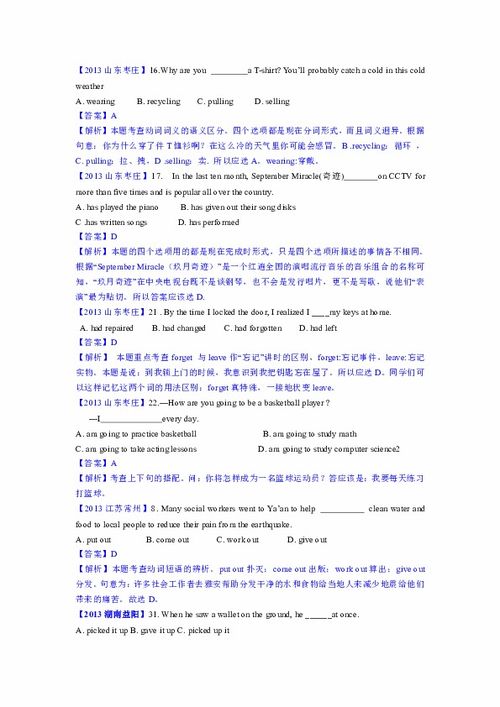手动编程英文
Understanding Programming Verbs
Programming involves a plethora of actions, or verbs, that developers use to create, modify, and manage code. These verbs encapsulate the essence of programming, guiding developers through the process of turning ideas into functional software. Let's delve into some key programming verbs:
1. Define
Definition:
Establish the structure or behavior of elements within the code.
Usage:
Developers define variables, functions, classes, and data structures to organize and manage data and logic effectively.
Example:
`int x = 10;` (Defines an integer variable 'x' with a value of 10) 2. Declare
Definition:
Introduce the existence of an entity to the compiler, specifying its data type and name.
Usage:
Declarations inform the compiler about the type and name of variables, functions, or classes before they are used in the code.
Example:
`extern int foo();` (Declares the existence of a function 'foo' which returns an integer) 3. Assign
Definition:
Assign a value to a variable.
Usage:
Assignments are fundamental for manipulating data and updating variable values during program execution.
Example:
`x = 20;` (Assigns the value 20 to the variable 'x') 4. Invoke
Definition:
Call a function or method to execute its code.
Usage:
Invocation enables the execution of specific blocks of code, facilitating modular and reusable programming.
Example:
`result = add(5, 3);` (Invokes the function 'add' with arguments 5 and 3) 5. Iterate
Definition:
Repeat a set of instructions or actions multiple times.
Usage:
Iteration is crucial for performing repetitive tasks, such as processing arrays or executing loops.
Example:
```c
for(int i = 0; i < 5; i ) {
// Perform actions repeatedly
}
```
6. Compare
Definition:
Evaluate the equality or difference between two values.
Usage:
Comparison is essential for making decisions and controlling the flow of execution based on specific conditions.
Example:
`if (x == 10)` (Compares the value of 'x' with 10) 7. Instantiate
Definition:
Create an instance of a class or object.
Usage:
Instantiation allocates memory and initializes an object, enabling the use of its properties and methods.
Example:
`Car myCar = new Car();` (Instantiates a new object of the class 'Car') 8. Concatenate
Definition:
Combine multiple strings or data structures into one.
Usage:
Concatenation is used to merge text or data elements, often to create meaningful output or construct complex data structures.
Example:
`fullName = firstName " " lastName;` (Concatenates first name and last name) 9. Return
Definition:
Provide a result or value back to the caller from a function.
Usage:
Returning values allows functions to perform computations and pass the result back to the calling code.
Example:
`return sum;` (Returns the variable 'sum' from a function)
10. Handle
Definition:
Manage or deal with a particular situation or type of data.
Usage:
Handling involves implementing logic to respond appropriately to various events, errors, or input data.
Example:
```python
try:
Attempt an operation
except Exception as e:
Handle the exception
```
Conclusion
Mastering these programming verbs is fundamental for any developer striving to write efficient, readable, and maintainable code. By understanding and applying these actions effectively, programmers can navigate the complexities of software development with confidence and precision.
本文 新鼎系統网 原创,转载保留链接!网址:https://acs-product.com/post/18088.html
免责声明:本网站部分内容由用户自行上传,若侵犯了您的权益,请联系我们处理,谢谢!联系QQ:2760375052 版权所有:新鼎系統网沪ICP备2023024866号-15








